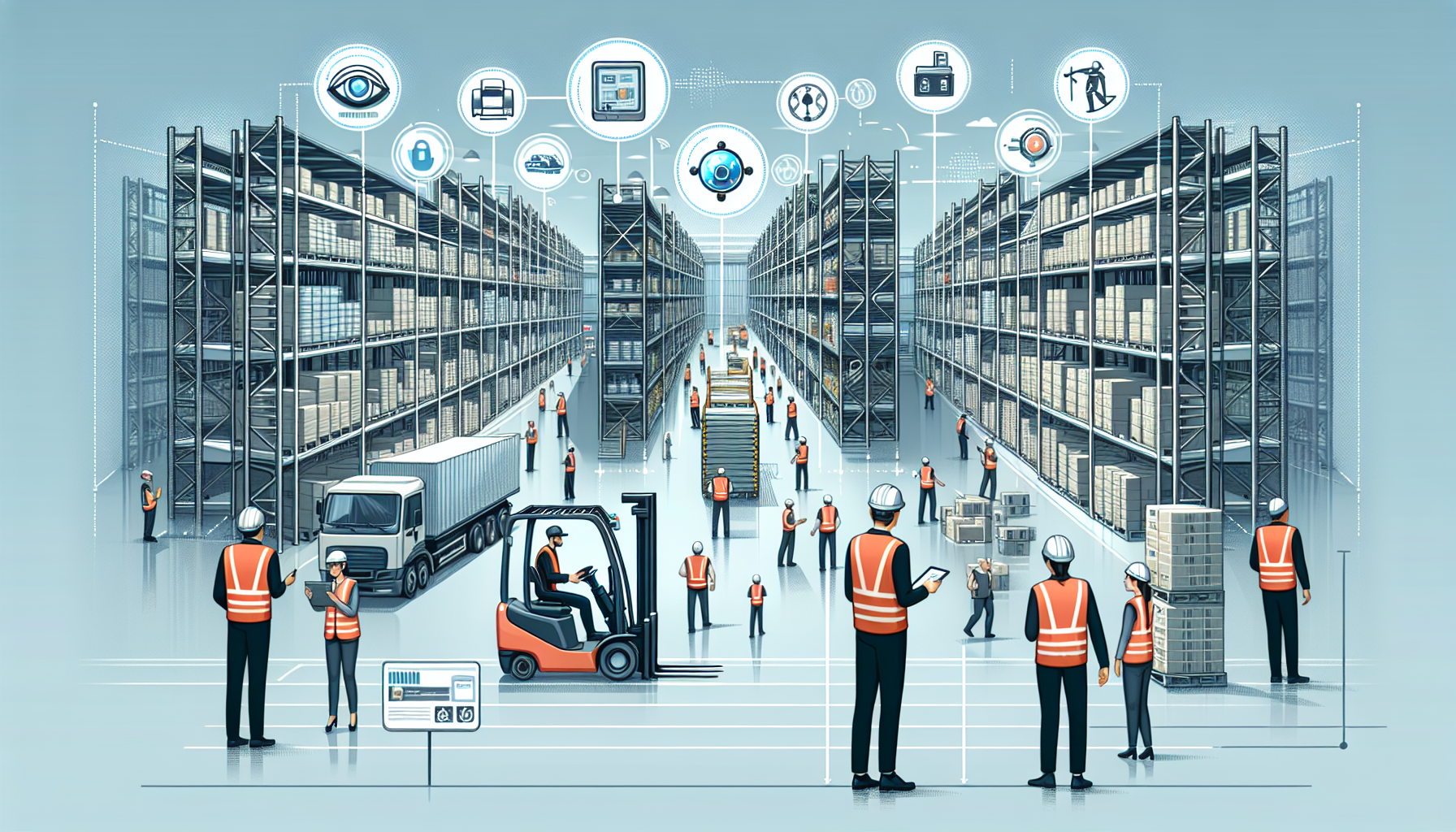Expanding warehouse operations can bring about numerous benefits such as increased storage capacity, improved efficiency, and enhanced productivity. However, as the size and complexity of warehouses grow, it becomes crucial to address safety concerns, particularly regarding pedestrian safety.
The Risks of Pedestrian Hazards in Warehouses
Warehouses are bustling with activity, with forklifts and other machinery constantly moving to transport goods and materials. This combination of heavy machinery and workers on foot can create potential hazards that may result in accidents and injuries.
According to the Occupational Safety and Health Administration (OSHA), there are approximately 34,900 serious forklift-related accidents in the United States each year, with many of them occurring in warehouses. These accidents can lead to severe injuries, including crushed limbs, fractures, and even fatalities.
Common causes of pedestrian accidents in warehouses include:
- Lack of visibility: In busy warehouse environments, it can be challenging for forklift operators to have clear visibility, especially when moving bulky loads or negotiating tight corners.
- Inadequate signage and markings: Clear and prominent signage can help indicate pedestrian walkways, forklift traffic areas, and restricted zones. In the absence of proper signage and markings, pedestrians may inadvertently enter dangerous areas.
- Insufficient training: Both forklift operators and pedestrians need to undergo comprehensive training on warehouse safety protocols, including how to navigate safely around each other.
The Role of Technology in Enhancing Pedestrian Safety
To address pedestrian safety concerns in expanding warehouse operations, it is essential to incorporate advanced technologies that can detect and prevent potential accidents.
One such technology is the Forklift Pedestrian Detection System offered by HCO Innovations. This innovative system utilizes sensors, cameras, and artificial intelligence algorithms to detect the presence of pedestrians in the vicinity of forklifts. By analyzing real-time data, the system can alert forklift operators to potential hazards and automatically apply emergency braking to avoid collisions.
Notable features of the Forklift Pedestrian Detection System include:
- Pedestrian detection: The system uses sensors and cameras to constantly monitor the surrounding area for pedestrians. It can accurately detect their presence and warn the forklift operator in real-time.
- Emergency braking: In critical situations, the system can automatically apply emergency braking to prevent accidents. This feature significantly reduces the risk of collision and minimizes the severity of potential injuries.
- Customizable settings: The system allows for customization to suit the specific needs of different warehouse environments. This flexibility ensures optimal performance and adaptability.
The Forklift Pedestrian Detection System offered by HCO Innovations not only enhances safety but also boosts productivity and efficiency within the warehouse. By preventing accidents, it helps to avoid costly downtime and repairs, ultimately leading to improved operational efficiency and cost-effectiveness.
Taking a Proactive Approach to Pedestrian Safety
Implementing a comprehensive approach to pedestrian safety in warehouse operations is vital. Alongside technology solutions like the Forklift Pedestrian Detection System, there are several other measures that warehouse owners and managers can take to ensure the well-being of their employees.
1. Conduct regular safety training: Provide thorough safety training sessions to both forklift operators and pedestrians. Teach them about the potential hazards and best practices for navigating warehouse environments safely.
2. Designate clearly marked pedestrian walkways: Create designated walkways and pathways for pedestrians to follow. Use highly visible floor markings and signage to ensure that both forklift operators and pedestrians can easily identify these routes.
3. Implement speed limits: Set appropriate speed limits for forklifts within the warehouse and strictly enforce them. This will help reduce the risk of accidents and provide a safer environment for pedestrians.
4. Regularly maintain equipment: Ensure that all machinery, including forklifts, undergoes routine maintenance checks to identify and address any mechanical issues that could compromise safety.
5. Foster a culture of safety: Encourage open communication about safety concerns and empower employees to report any potential hazards they come across. Regular safety meetings and discussions can help reinforce the importance of safety in the warehouse.
By combining advanced technological solutions like the Forklift Pedestrian Detection System with proactive safety measures, warehouse operators can significantly reduce the risk of accidents and create a safer working environment for their employees.
Investing in warehouse safety not only prevents injuries and saves lives but also improves overall productivity and cost-effectiveness in the long run. Prioritizing pedestrian safety is a crucial step for any expanding warehouse operation and should be an integral part of the overall safety strategy.
Learn more about how HCO Innovations can enhance safety and optimize warehouse operations with their innovative solutions by clicking here.

